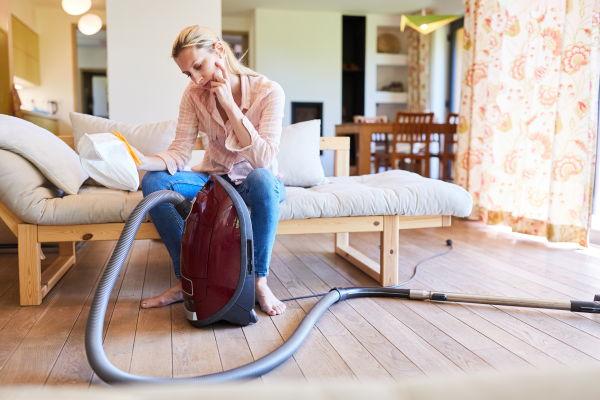Apartment Living: How to Fix a Vacuum Cleaner With No Suction

Apartment living comes with its own set of challenges, and a malfunctioning vacuum cleaner can quickly become a frustrating obstacle. A vacuum with no suction can turn a simple cleaning task into a daunting chore, leaving you wondering how to restore its effectiveness. Before you consider replacing your home or apartment vacuum, there are several troubleshooting steps you can take to identify and fix the issue. In this blog, we'll explore common reasons behind a vacuum cleaner's loss of suction in an apartment setting and provide practical solutions to help you get your cleaning routine back on track without the need for professional assistance.
Check for Clogs
One of the most common culprits behind a vacuum's lack of suction is a clog in the system. Begin by inspecting the vacuum's hose. Check the brush roll and any attachments for debris and hair. Clearing out any blockages can significantly improve your vacuum's performance.
Clean or Replace Filters
Dirty or clogged filters can hinder airflow and cause suction issues. Depending on the vacuum model, locate the filters and clean or replace them according to the manufacturer's instructions. Regular filter maintenance is crucial to ensure optimal suction power.
Empty the Dustbin or Bag
An overly full dustbin or bag can restrict airflow and diminish suction. Empty the dustbin or replace the bag as needed to prevent clogs and maintain the vacuum's efficiency.
Inspect the Brush Roll
Check the brush roll or beater bar for tangles and debris. A tangled brush roll can prevent proper contact with the floor and reduce suction. Remove any obstructions and ensure the brush roll spins freely.
Adjust Height Settings
If your vacuum has adjustable height settings, ensure it's set correctly for the type of flooring you're cleaning. Incorrect height settings can result in poor suction and inefficient cleaning.
Inspect Seals and Gaskets
Examine the vacuum's seals and gaskets for cracks or damage. Any leaks in the system can lead to loss of suction. Replace damaged seals or gaskets to restore the vacuum's airtightness.
Check the Hose Connection
Make sure the hose is securely attached to both the vacuum's body and any attachments. Loose connections can lead to air leakage and reduced suction power.
Check for Damaged Belts
If your vacuum has a belt-driven brush roll, inspect the belts for wear and tear. Damaged belts can affect the brush roll's rotation, impacting the vacuum's ability to pick up debris.
Examine the Motor
While less common, motor issues can also lead to reduced suction. If you suspect a motor problem, it's advisable to consult the manufacturer's troubleshooting guide or seek professional assistance.
Professional Help
When all troubleshooting efforts fail to restore your vacuum's suction, seeking professional help becomes a practical solution. Professional vacuum repair services have the expertise and tools to diagnose and address complex issues that may not be evident to the average user. Trained technicians can identify and fix issues related to motor problems and internal components that might be causing the loss of suction. While DIY approaches are valuable, entrusting your vacuum to professionals ensures a thorough and accurate assessment, potentially extending the lifespan of your appliance and saving you from unnecessary expenses.
Regular Maintenance
Prevent future suction problems by practicing regular maintenance. Clean the vacuum filters, brush roll, and dustbin after each use, and follow the manufacturer's recommended maintenance schedule.
Conclusion
Living in an apartment requires practical solutions to everyday challenges, and a malfunctioning vacuum cleaner can disrupt your cleaning routine. By diagnosing and addressing the reasons behind a vacuum's loss of suction, you can save both time and money. Whether it's unclogging a hose or adjusting settings, these troubleshooting steps can help you restore your vacuum's effectiveness and ensure a clean and comfortable living space in your apartment. Remember, routine maintenance is key to preventing future issues, so invest a little time to keep your vacuum in optimal working condition.